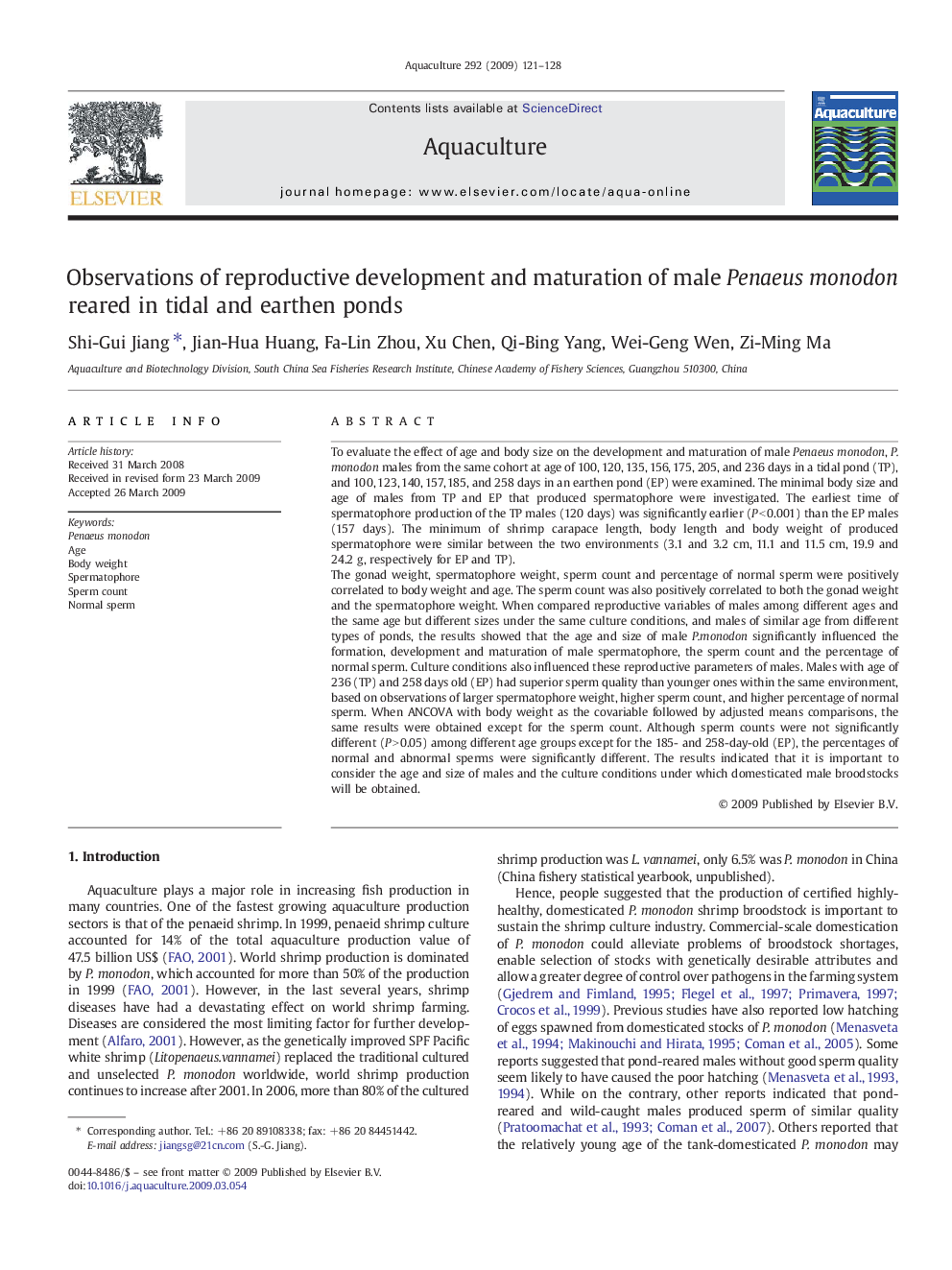| کد مقاله | کد نشریه | سال انتشار | مقاله انگلیسی | نسخه تمام متن |
|---|---|---|---|---|
| 2424041 | 1552943 | 2009 | 8 صفحه PDF | دانلود رایگان |

To evaluate the effect of age and body size on the development and maturation of male Penaeus monodon, P. monodon males from the same cohort at age of 100, 120, 135, 156, 175, 205, and 236 days in a tidal pond (TP), and 100, 123, 140, 157, 185, and 258 days in an earthen pond (EP) were examined. The minimal body size and age of males from TP and EP that produced spermatophore were investigated. The earliest time of spermatophore production of the TP males (120 days) was significantly earlier (P < 0.001) than the EP males (157 days). The minimum of shrimp carapace length, body length and body weight of produced spermatophore were similar between the two environments (3.1 and 3.2 cm, 11.1 and 11.5 cm, 19.9 and 24.2 g, respectively for EP and TP).The gonad weight, spermatophore weight, sperm count and percentage of normal sperm were positively correlated to body weight and age. The sperm count was also positively correlated to both the gonad weight and the spermatophore weight. When compared reproductive variables of males among different ages and the same age but different sizes under the same culture conditions, and males of similar age from different types of ponds, the results showed that the age and size of male P.monodon significantly influenced the formation, development and maturation of male spermatophore, the sperm count and the percentage of normal sperm. Culture conditions also influenced these reproductive parameters of males. Males with age of 236 (TP) and 258 days old (EP) had superior sperm quality than younger ones within the same environment, based on observations of larger spermatophore weight, higher sperm count, and higher percentage of normal sperm. When ANCOVA with body weight as the covariable followed by adjusted means comparisons, the same results were obtained except for the sperm count. Although sperm counts were not significantly different (P > 0.05) among different age groups except for the 185- and 258-day-old (EP), the percentages of normal and abnormal sperms were significantly different. The results indicated that it is important to consider the age and size of males and the culture conditions under which domesticated male broodstocks will be obtained.
Journal: Aquaculture - Volume 292, Issues 1–2, 1 July 2009, Pages 121–128